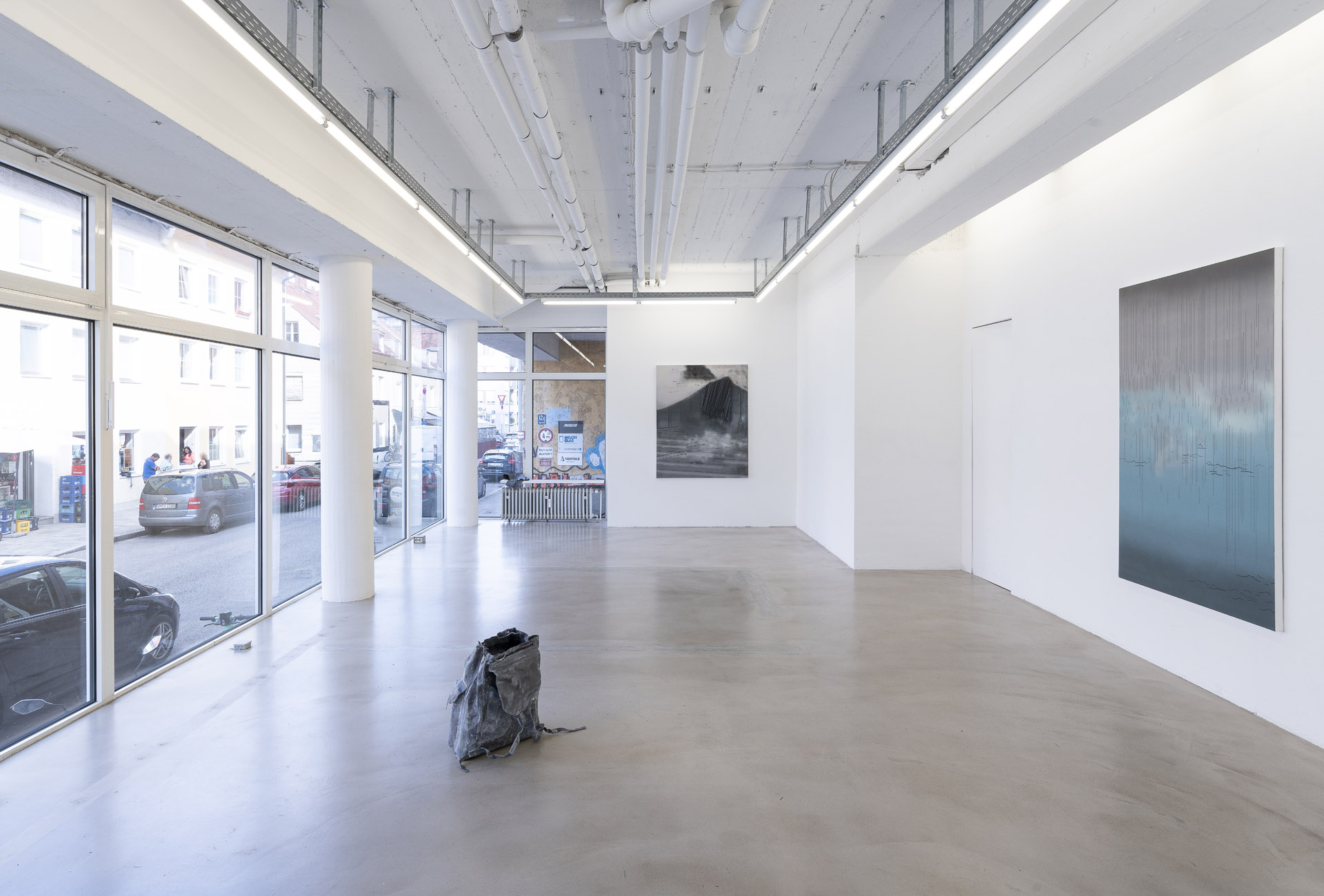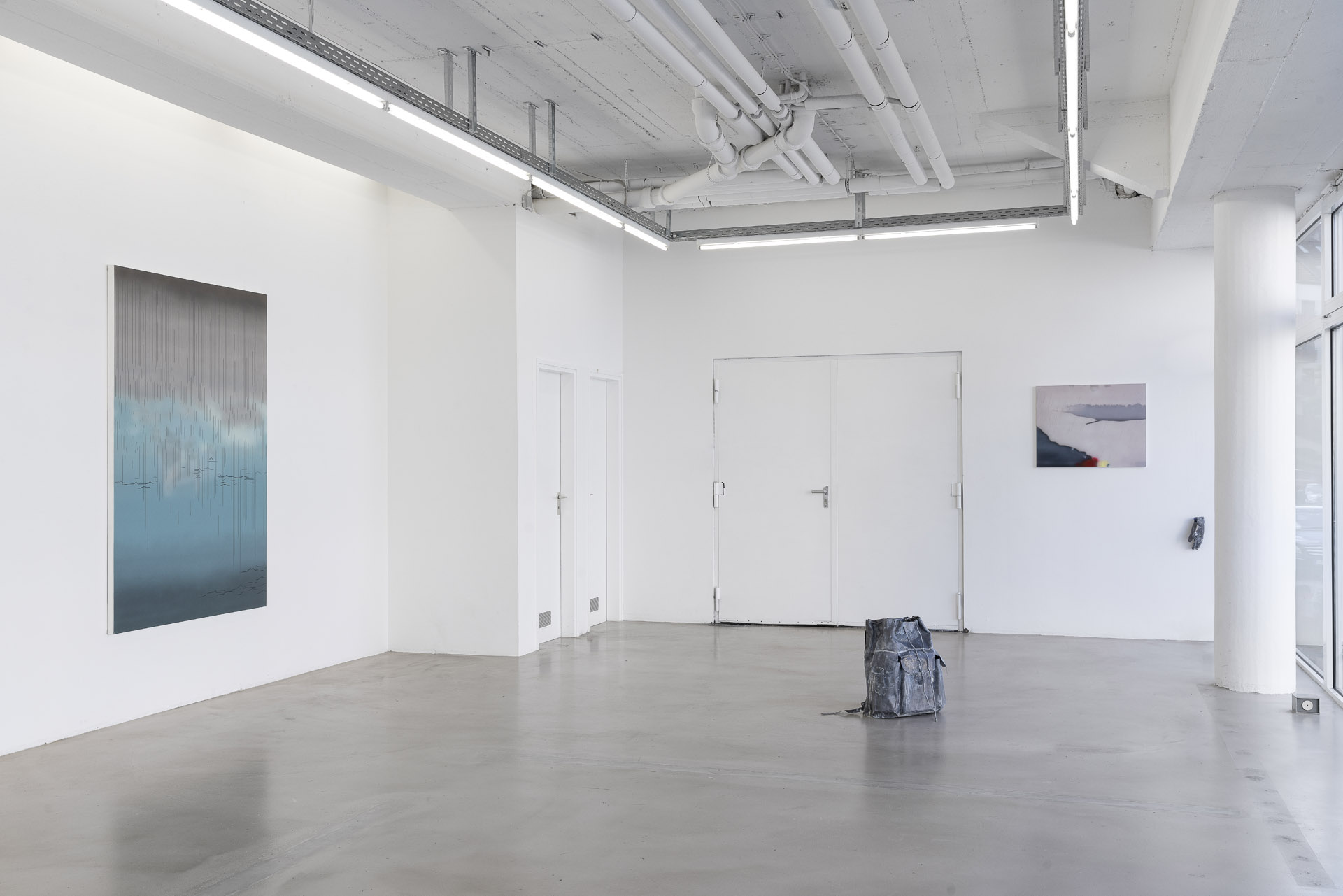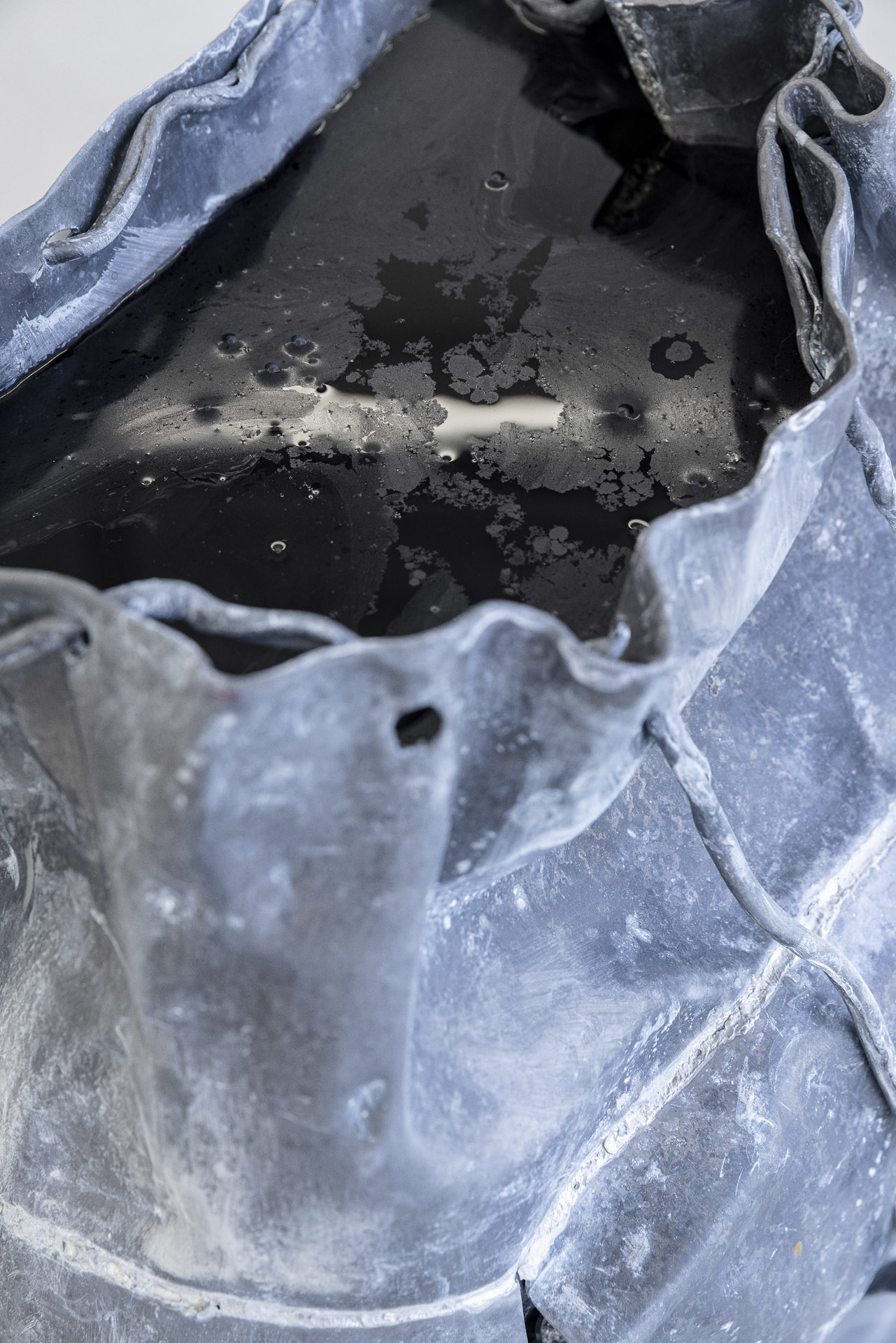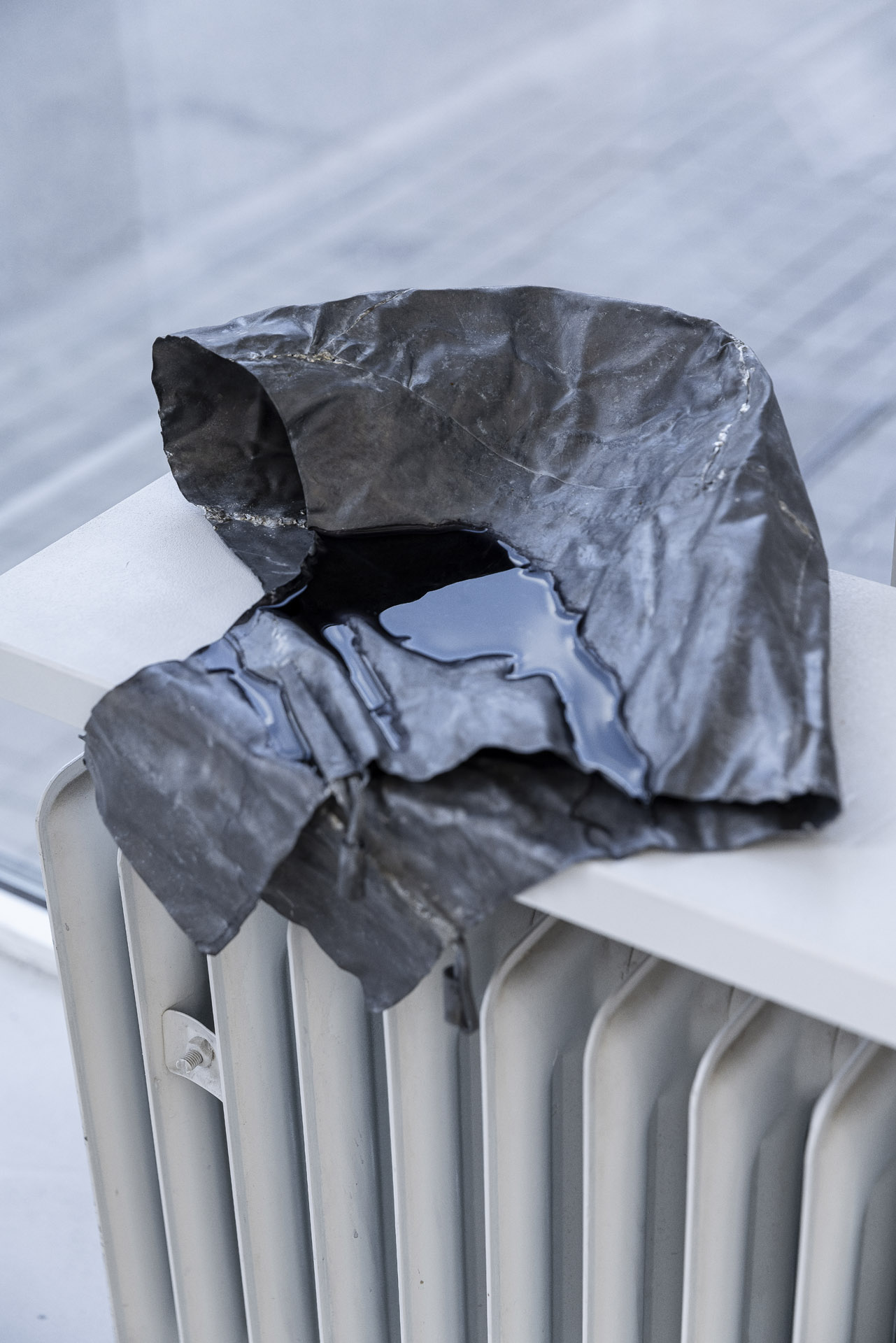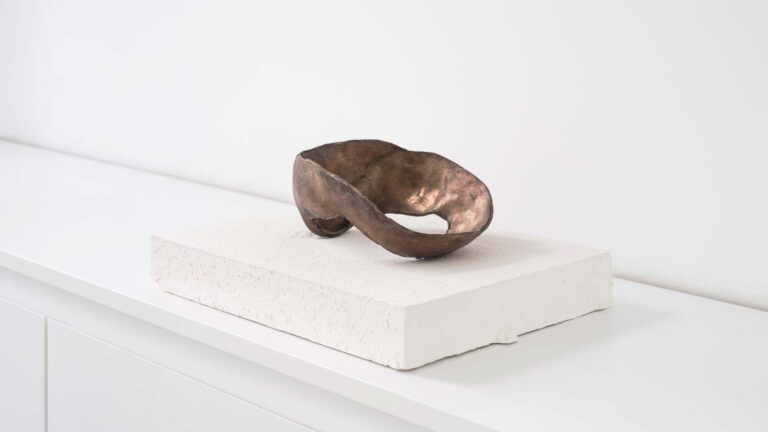Artist: Littlewhitehead
Exhibition title: New Rain
Venue: Nir Altman, Munich, Germany
Date: July 1 – August 6, 2022
Photography: Dirk Tacke / all images copyright and courtesy of the artist and Nir Altman, Munich
For its third exhibition at Nir Altman, albeit its first one since the gallery moved into new premises, littlewhitehead brings a series of new works on canvas and sculptures that together feed into a cohesive rainscape.
The common denominator between the sculptural works and paintings is an instantly evident absence of humanity, which reads as a continuation of the duo’s in-depth research into abandoned and dystopian landscapes from a post-anthropocentric viewpoint.
Although separately conceptualized as two independent series of works, the sculptures and paintings occupy the gallery in an interactive placement. They seek dialogue between each other as much as with the viewer, who by this scenario is turned into a wanderer through an uninhabited, yet atmospherically loaded space.
The paintings are constructed around one prominent figurative element: rain. Littlewhitehead’s playful exploration into appropriating found imagery – using certain pictorial elements, and eliminating others – is continued in this series, as they single out the motif of rain from elaborate Ukiyo-e compositions. This 17th-19th century Japanese style, known for its mastery of flatness and contouring, heavily influenced European avantgarde artists.
Littlewhitehead is revisiting this painterly tradition, while transferring its specific aesthetic into a visual identity of their own. For this, the duo combines different open-source technologies that allow them to automate the physical making of the painting. Through programming and hacking, the artistic agency remains largely within the duo’s control. However, part of the process is consciously delegated to AI in pursuit of a productive co-creation between man and machine. The rain paintings as products of such hybrid creativity thus also attest to a paradigmatical shift in the painter’s identity, who now embraces a collaborative rather than oppositional stance towards robotic means.
The paintings’ sleekness stands in stark contrast to the tactile qualities of the sculptural pieces made of sheet lead. Here, the artist duo chose a metal that is ambiguous by nature: Lead is easily malleable evoking a sense of destructibility through physical force. But lead also protects from radiation while its fumes are highly poisonous. Depending on the perspective, the material can be shield or weapon, soft or resistant.
The metal is only one of two sculptural components, water builds the second. All sculptures in the show are vessels containing water, like the residue of some rainfall that has just passed through. Water as an impermanent, evaporable component brings an uncanny immediacy to the sculptures and the setting at large: something has just happened here, just minutes before one’s own presence filled the room. If water is seen in the context of life’s beginning, the idea of a natural cycle being referenced in paintings and sculptures comes to the fore. One is standing in a liminal space, amidst an in-betweenness of falling and ascending water. But one’s body, consisting to 60 per cent of water, constitutes part of that cycle. As the leading figure of Hydrofeminism Astrida Neimanis expanded on in her landmark thesis On Becoming a Body of Water (2012): “water is also a planetary archive of meaning and matter.”
What comes through in littlewhitehead’s latest series of works is a deep connection to the notion of water as an archive encapsulating ancient to present-day meanings. Given that the sculptures represent figurative items – an abandoned cap, a forgotten backpack or a lost glove, the political dimension of water becomes inescapable. The objects come alive like hints and clues of an already begun narrative. One that littlewhitehead cleverly puts into our hands, for us to define its possible endings.
Text by Tatjana Schaefer






